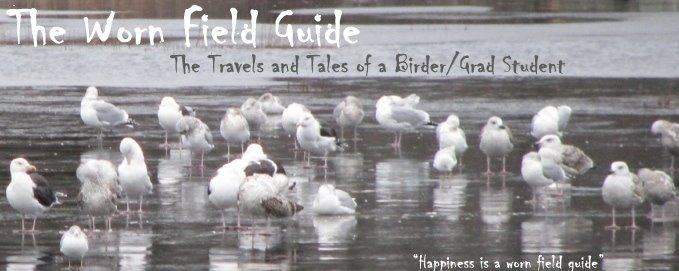Hey all! I'm here looking for a little bit of help and no matter who you are you can lend a hand. As many of you may know I'm a pretty avid birder in New Hampshire. I'm also a graduate student so I'm therefore pretty poor. However, I absolutely love going on whale watches to look for birds. It's come to my attention lately that a lot of people cannot make it on long pelagic trips, are unwilling to go offshore for that long, or aren't comfortable going on whale watches themselves. However, there aren't any cheap guides or ways to learn your birds offshore as naturalists must focus on whales not birds.

Finding a mixed flock of shearwaters is very exciting! Yet it can also be overwhelming - particularly when you're trying to pick out the Cory's, Manx, etc. or get a good count on the number of birds in a group.
So I hatched this idea: Trade bird ID help on a whale watch (help people learn birds, identify them for them, help them spot them, etc.) in exchange for them paying for my whale watch. In this way, I get to go offshore and they get to actually learn the birds out there and/or feel confident in their identification.

Jaegers are a great example of confusing birds - can you figure out which species these birds are?
However, there's a few problems - and thats where you come in. I need to know the following things:
1. Would people be interested in this? Most all day pelagics cost between 80-100$ Half day trips aren't run. A whale watch tends to be about 30$ - so it would be about 60$ for a one on one type trip but if a group of people got together it would be substantially less.
2. Is there some sort of tax implication for myself? I wouldn't be receiving money, the person who wanted my help would pay the whale watch company directly and I'd just get on board with them...
3. Is there some sort of liability issue for myself?
Naturally being a poor grad student I can't really pay for legal advise so if anyone knows anyone I can talk to for free I'd be appreciative. If anyone has any insight or ideas I'm also completely game!








